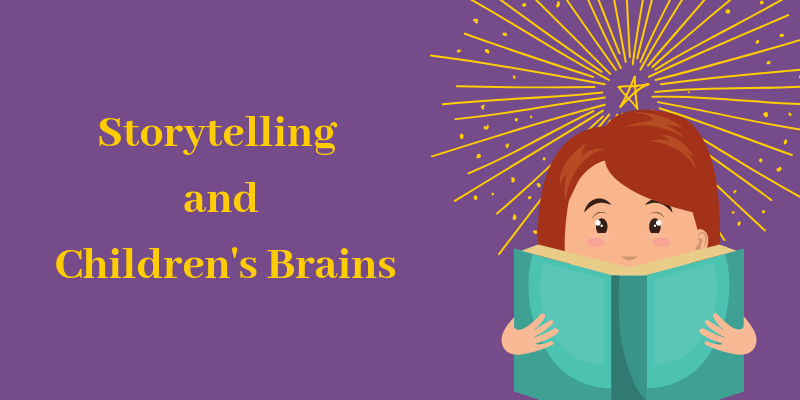Storytelling and Children’s Brains

Why do we tell stories?
Because it’s fun? Because it helps us relate to other people? Because it helps to understand new ideas?
All these are valid points, and true for anyone who’s ended up lost inside a book. Even so, it’s sometimes hard to argue the ‘why’ for something so intangible, let alone prove that the benefits are real - especially in a school context.
Events like World Book Day are all about celebrating stories. But even the name suggests that it only needs to last a day. Why should we prioritise storytelling for the whole year when there are so many other useful things the children could be doing?
In fact there are scientifically proven benefits to engaging with stories. Neuroscience has shown that stories have a unique effect on the human brain.
Essentially, when listening to facts, the part of our brain that is activated is the area that processes language and meaning. But when engaging with a story, not only is the language and meaning part of the brain activated, but also all other areas that would be used if we were actually experiencing the events in the story ourselves. You can read more about this here.
For example, descriptions of something that suggests a smell, taste or touch (“the air was sweet with the scent of coffee and cinnamon”) stimulates activity in the sensory cortex, the part of the brain that processes information related to the senses. Similarly, descriptions of movement (“she grabbed the branch and scrambled up the tree”) trigger the motor cortex, associated with movement. What this means is that stories create activity across the whole brain and develop our understanding of experiences outside our own. When we finish a book and feel as though we’ve been on an entire journey with a character, that’s because our brain basically has.
But hang on. How does this relate to children?
Research shows that reading stories, especially picture-books for younger children, has a positive effect on children’s brain development.
If reading triggers activity in the part of the brain connected with understanding, mental imagery, and language processing, then it becomes a kind of mental exercise - practice for the brain. Even better, the more that children are read to and the more they read, the bigger effect it has on their brain activity, and the more they get out of it.
In fact, a 2018 study investigated the effects of different kinds of storytelling in children’s brains, from a picture book being read out loud, to an audio version of a story, to an animated video. What it found was that illustrated stories with a voice-over (like reading a picture book out-loud) showed the most connectivity between the parts of the brain connected with language, visual processing, learning and reflection. The combination of audio and pictures lets the brain connect the words with the images and then imagine what is happening. By comparison, the audio-only story meant the children spent most of their brain’s energy understanding what was happening and consequently engaged with the story less. On the other hand the animated video triggered a lot of activity in visual perception but much less on learning and reflection, so the brain was more passive.
It seems that the key ingredient for letting children engage with stories is allowing space for the imagination to develop.
If we return to the idea that stories give the brain an experience that replicates real life, this means we can use storytelling to teach children to engage more actively with the world around them. Want to teach a bit of geography? Go to another country with a book like Kensuke’s Kingdom or Handa’s Surprise. For a subject like citizenship stories are even more effective, as the brain treats interactions with fictional characters in a similar way to real-life encounters with other people.
When we put it that way, including storytelling in the curriculum seems like a no brainer (or rather an all brainer…). It helps little humans to develop their understanding of the world around them as well as their understanding of other people. This, surely, is exactly what we should be encouraging in school.
- Rachel
